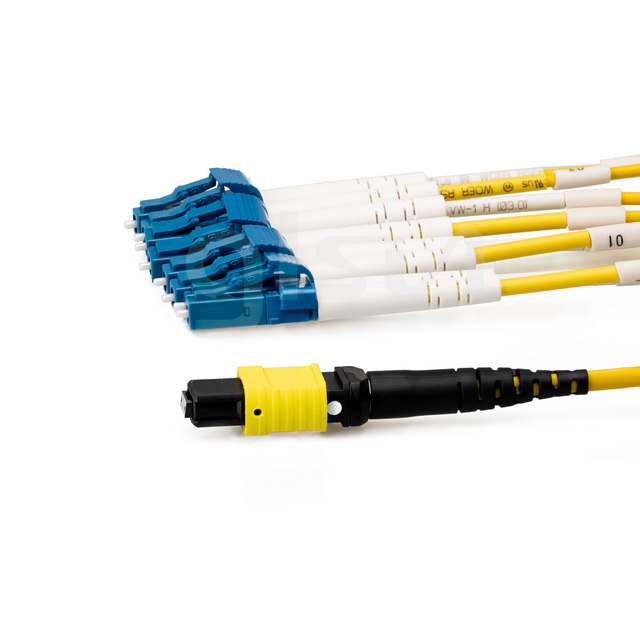Fiber Optic Tech
The Advantages of MPO/MTP Cables in Data Centers
MPO/MTP cables feature high density and pre-connection, which can meet the needs of high-speed and large-capacity data centers. The advantages of using MPO/MTP Cables in data centers are as follows.
1. Cost-effectiveness. Generally MPO/MTP pre-connection does not generate additional cost.
2. MPO/MTP cables can protect the effectiveness and safety of investment. Although the application of MPO/MTP cables puts forward higher requirements on the preliminary and field investigation capability of the integrator, it can also protect the investor’s right of control over the project and the right to be informed of the use of products, thus avoiding the risk of material waste and project investment loss.
3. Easy operation and installation, simple plug and play. We can make a comparison. For example, to lay a 288-fiber cable, with 3 workers and 2 sets of equipment using the traditional fusion splicing method, it takes about 2 hours of laying, about 8 hours of fusion splicing and installation, totally 10 hours. But if we adopt MPO/MTP pre-connected cables, it takes about 2 hours of laying, but the installation time is greatly shortened to about one hour, which has a huge advantage in terms of time cost.
4. MPO/MTP pre-connected cables have been fully tested in the factory, and the installation process does not attach other products, thus facilitating field testing and operation.
5. The optical fiber link is well protected, with no fusion spot or bare fiber being exposed to the air, preventing aging and joint breakage.
6. Convenient maintenance. The MPO/MTP pre-connected cable splitters feature excellent mechanical propertoes, therefore the operation or maintenance process will not affect the normal use of optical fibers.
7. MPO/MTP pre-connected cable splitters can be quickly plugged, removed and re-installed as required.

Although MPO/MTP cables provide many engineering implementation benefits through end-to-end high-density integration and plug-and-play implementations, it is still necessary to uate their ability to support smooth network upgrades. As we know, the wiring system of a data center will last for more than 5-10 years, and the wiring system generally lasts longer than network equipment, therefore, it is necessary to take the upgrading and network expansion capacity into account when planning the wiring system of data centers. With data centers updating from 10G to 100G, traditional LC port connection mode has been gradually falling behind, while MPO/MTP cables are capable of the task. MPO/MTP cables have good adaptability for network upgrade and capacity expansion. Under the IEEE 802.3ba standard, there are two ways to achieve 100G with MPO/MTP.
1. In a 24-fiber MPO cable and connector, 10 fibers are used to transmit signals, another 10 fibers to receive signals. In this way, 10 parallel 10G optical links form a 100G optical link.
2. In two 12-fiber MPO optical cables and connectors, 10 fibers of one MPO cable are used for sending signals, and 10 fibers of the other MPO optical cable are used for receiving signals. Similarly, 10 parallel 10G optical links form a 100G optical link. But under IEEE 802.3bm standard, we can also realize parallel transmission of four 25G optical channels using 8-fiber MPO cables and their connectors.
In the selection of MPO/MTP cable, in addition to checking design needs, the most important thing to pay attention to is whether the MPO/MTP cable manufacturing factory is in line with ISO 9000 and a series of quality management system certification, and whether its production process and product performance is in line with the current industry optical fiber connection component production standard certification. GLsun’s MPO/MTP cables are in line with the above requirements, making it your most sui choice to build green and efficient data center wiring system.



















